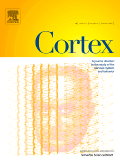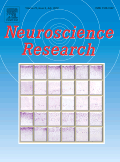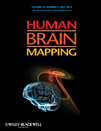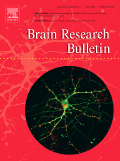
CEREBRAL CORTEX
Scope & Guideline
Illuminating the pathways of cortical dynamics.
Introduction
Aims and Scopes
- Neuroanatomy and Connectivity:
Investigates the structural and functional connectivity of the brain, particularly how different regions interact and communicate, including studies on white matter tracts, cortical layers, and synaptic connections. - Neurophysiology and Brain Dynamics:
Explores the electrical and metabolic activities of the brain, utilizing techniques such as EEG and fMRI to assess brain oscillations, neuronal firing patterns, and their relation to cognitive functions. - Cognitive Neuroscience:
Examines the neural correlates of cognitive processes, including memory, attention, language, and emotion, often through experimental paradigms that assess behavior alongside brain activity. - Neurodevelopment and Aging:
Focuses on how brain structure and function change across the lifespan, from early development through aging, and how these changes relate to cognitive abilities and vulnerabilities to neurodegenerative diseases. - Pathophysiology of Neurological Disorders:
Investigates the neural mechanisms underlying various neurological and psychiatric disorders, including schizophrenia, autism spectrum disorders, and Alzheimer's disease, with an emphasis on potential biomarkers and therapeutic targets. - Multimodal Neuroimaging:
Utilizes a combination of neuroimaging techniques (e.g., fMRI, PET, diffusion MRI) to provide a comprehensive understanding of brain structure and function, enhancing the interpretability of findings across studies. - Interdisciplinary Approaches:
Encourages collaboration across disciplines, integrating insights from genetics, molecular biology, psychology, and computational modeling to advance the understanding of brain function.
Trending and Emerging
- Neuroplasticity and Rehabilitation:
Recent publications highlight the brain's ability to adapt and reorganize itself in response to training and rehabilitation, particularly in populations recovering from injuries or neurological conditions. - Machine Learning in Neuroimaging:
There is a growing trend in applying machine learning techniques to neuroimaging data, enabling more sophisticated analyses and predictions related to cognitive functions and disorders. - Biomarkers for Neurological Disorders:
Research is increasingly focused on identifying neurobiological markers that can aid in early diagnosis and treatment of neurological and psychiatric disorders, emphasizing the importance of translational research. - Cortical Dynamics During Cognitive Tasks:
Emerging studies are examining how dynamic changes in cortical activity relate to cognitive processes, particularly through the use of advanced imaging techniques that capture real-time brain function. - Impact of Lifestyle on Brain Health:
The journal is witnessing a rise in studies exploring how lifestyle factors, such as diet, exercise, and stress, influence brain health and cognitive performance, reflecting a holistic approach to neuroscience. - Social Neuroscience:
There is a noticeable increase in research focusing on the neural mechanisms underlying social behavior and interactions, including empathy, cooperation, and social cognition. - Neurodevelopmental Trajectories:
An emphasis on understanding how brain structure and function develop over time, particularly in relation to cognitive and behavioral outcomes, is becoming more prominent in recent publications.
Declining or Waning
- Basic Neuroanatomy Studies:
There seems to be a decline in purely descriptive studies focused on basic neuroanatomy without functional implications, as the journal increasingly favors research that connects structure to function or behavior. - Traditional Neuropsychological Assessments:
As the field evolves, there is a noticeable reduction in the emphasis on traditional neuropsychological assessment methods, with a shift towards more dynamic and integrative approaches that consider real-time brain activity. - Single Modality Studies:
Research that relies solely on a single imaging modality (e.g., only fMRI or only EEG) is becoming less common, as the journal increasingly publishes studies that utilize multimodal approaches to provide richer insights. - Clinical Case Reports:
There is a diminishing number of clinical case reports, suggesting a shift towards larger cohort studies and experimental approaches that explore broader patterns rather than individual cases. - Neurophilosophy and Theoretical Neuroscience:
Papers that focus heavily on theoretical discussions of consciousness or philosophical implications of neuroscience are less frequently published, as the journal prioritizes empirical data and findings. - Epidemiological Studies:
While still relevant, there appears to be a decline in the number of epidemiological studies focused on brain health, likely as the journal pivots towards more mechanistic and experimental research.
Similar Journals

CORTEX
Advancing Understanding of the Brain and BehaviorCORTEX is a premier international journal published by Elsevier Masson, focusing on the cutting-edge areas of cognitive neuroscience, psychology, and neurology. With an impressive impact factor that places it in Q1 quartiles across multiple categories such as Cognitive Neuroscience and Neuropsychology, this journal serves as a vital resource for researchers, clinicians, and students alike. Established in 1964, CORTEX has continued to excel in disseminating high-quality scholarly work, offering insights that significantly enhance our understanding of the brain's functioning and behavior. Although not an open-access publication, it provides various access options to ensure the dissemination of knowledge is as wide-reaching as possible. As the field of cognitive psychology evolves, CORTEX remains at the forefront, fostering an environment for interdisciplinary collaboration and innovation. Researchers seeking to stay engaged with the latest advancements will find CORTEX an indispensable tool for their professional development.

Annual Review of Neuroscience
Empowering Neuroscience Through Comprehensive ReviewsThe Annual Review of Neuroscience, published by Annual Reviews, is a premier journal that has been at the forefront of neuroscience research since its inception in 1978. With an ISSN of 0147-006X and E-ISSN 1545-4126, this leading academic journal boasts a remarkable impact factor, placing it in the prestigious Q1 category in Neuroscience (miscellaneous), with an impressive Scopus ranking of 4 out of 113 and a stellar 96th percentile in general neuroscience. Focused on publishing comprehensive and authoritative review articles, the Annual Review of Neuroscience aims to synthesize and critically evaluate the latest advances in the field, making it an indispensable resource for researchers, professionals, and students alike. While it does not offer open access, the insights and discoveries highlighted in its issues are crucial for those dedicated to understanding the complexities of the nervous system and driving forward innovative research. With a commitment to excellence and a forward-looking perspective, this journal continues to shape and influence the future of neuroscience.

NeuroImage-Clinical
Shaping the Future of Neuroscience through Collaborative ResearchNeuroImage-Clinical is a premier open access journal published by Elsevier Science Ltd, dedicated to advancing the field of clinical neuroimaging and its applications in a variety of neurological disorders. With an ISSN of 2213-1582, this journal has established itself as a leading source of innovative research since its inception in 2012, now continuing through 2024. Recognized for its high impact, it occupies the top quartile (Q1) in prestigious categories such as Cognitive Neuroscience, Neurology, and Radiology, affirming its relevance in clinical and research settings. Its Scopus rankings further exemplify its significant contribution to the disciplines of Radiology and Neurology, consistently placing it among the top tiers of journals in these fields. This journal not only provides critical insights for researchers and professionals but also serves as a valuable resource for students, fostering an understanding of the complexities in neuroimaging techniques and their implications for patient care. With open access options ensuring broad dissemination of knowledge, NeuroImage-Clinical plays a pivotal role in enhancing collaboration and innovation within the global neuroscience community.

Behavioral and Brain Functions
Pioneering Research in Behavioral NeuroscienceBehavioral and Brain Functions is a leading Open Access journal published by BMC, dedicated to advancing the field of behavioral neuroscience, cognitive neuroscience, and biological psychiatry since its inception in 2005. This esteemed journal, based in the United Kingdom, has established itself as a vital resource for researchers and professionals, boasting a remarkable influence demonstrated by its Q1 and Q2 rankings across multiple relevant categories. With its commitment to providing unrestricted access to high-quality research, the journal facilitates the dissemination of significant findings in understanding the complex interactions between behavior and brain function. The journal ranks impressively within the Scopus database, positioning itself among the top-tier publications in its categories, making it an essential platform for academic discourse and innovation. As it converges through 2024, Behavioral and Brain Functions continues to play a crucial role in shaping the forefront of neuroscientific inquiry, inviting contributions that challenge our understanding and promote further exploration in these dynamic fields.

NEUROSCIENCE RESEARCH
Championing High-Quality Neuroscience ResearchNEUROSCIENCE RESEARCH, published by Elsevier Ireland Ltd, is a leading journal in the field of neuroscience, with a notable reputation for disseminating high-quality research that spans a variety of topics within the discipline. With an ISSN of 0168-0102 and an E-ISSN of 1872-8111, this journal serves as a vital platform for both established researchers and emerging voices in the field. Ranking in the Q2 quartile in both Medicine and Neuroscience categories, it has been recognized as a reliable source of innovative findings since its inception in 1984, with continuous publication through 2024. Although it does not currently offer Open Access options, the journal is indexed in Scopus, holding a significant position at Rank #48/113 in General Neuroscience, reflecting its contribution to advancing the understanding of neural mechanisms across various contexts. With its address anchored in Ireland, NEUROSCIENCE RESEARCH plays an essential role in bridging scientific inquiry and practical applications, making it an indispensable resource for researchers, professionals, and students dedicated to the burgeoning field of neuroscience.

HUMAN BRAIN MAPPING
Unraveling the mysteries of the human brain.HUMAN BRAIN MAPPING, published by Wiley, is a premier journal in the field of neuroscience, devoted to comprehensively advancing understanding of brain structure and function through innovative mapping techniques. With an impressive impact factor and ranked in the Q1 category across multiple relevant disciplines—including Anatomy, Neurology, and Radiology—this journal is recognized as a vital resource for researchers and professionals passionate about the complexities of the human brain. Founded in 1993 and continuously publishing groundbreaking research, HUMAN BRAIN MAPPING is essential for those looking to stay at the forefront of developments in anatomical and neurological research. Though it does not currently offer Open Access options, the journal remains committed to disseminating high-quality research that influences clinical practices and academic inquiry. Its esteemed position within Scopus highlights its significance; charting at the top percentiles across various medical and health fields serves as a testament to the critical contributions made by the authors and researchers involved. As it converges toward 2024, HUMAN BRAIN MAPPING continues to be the go-to platform for publishing pivotal insights into the intricacies of brain mapping methodologies and applications.

Brain Connectivity
Connecting Minds Through Innovative Research.Brain Connectivity is a premier journal dedicated to advancing the understanding of neural connections and brain function through innovative research and interdisciplinary collaboration. Published by MARY ANN LIEBERT, INC, this journal has established itself in the field of neuroscience, earning a respectable Q2 ranking in the 2023 category of Neuroscience (Miscellaneous) and a Scopus rank of 61 out of 113 in General Neuroscience. Since its inception in 2011, Brain Connectivity has been at the forefront of research on the intricate web of brain networks, exploring topics such as functional connectivity, neuroimaging, and the implications of connectivity studies for understanding various neurological disorders. Researchers, professionals, and students benefit from comprehensive access to cutting-edge studies and critical reviews, fostering a deeper appreciation of brain dynamics. As the field evolves, Brain Connectivity remains a vital resource for those aiming to contribute to our growing understanding of brain architecture and function.

BRAIN RESEARCH BULLETIN
Bridging disciplines to enhance neuroscience knowledge.BRAIN RESEARCH BULLETIN is a leading academic journal published by PERGAMON-ELSEVIER SCIENCE LTD, dedicated to the dissemination of high-quality research in the interdisciplinary field of neuroscience. Since its inception in 1976, this journal has served as a vital platform for researchers, professionals, and students interested in a broad spectrum of topics within neuroscience, making significant contributions to the understanding of brain function and its associated disorders. With a commendable impact factor and a current Scopus rank of #35 out of 113 in general neuroscience, the journal holds a Q2 quartile ranking, underscoring its relevance and influence in the academic community. BRAIN RESEARCH BULLETIN invites submissions of original articles, reviews, and brief communications, enhancing scholarly communication within this dynamic field. Although the journal is not open access, it ensures widespread reach and impact through various subscription models, allowing access to pivotal findings that pave the way for future research advancements. For researchers aiming to share impactful discoveries and insights within the neuroscience community, BRAIN RESEARCH BULLETIN remains an essential outlet.

Frontiers in Human Neuroscience
Pioneering Discoveries in Neuropsychology and BeyondFrontiers in Human Neuroscience is a premier open access journal published by FRONTIERS MEDIA SA, dedicated to advancing the understanding of the complexities of human neuroscience. With an ISSN of 1662-5161, the journal has established its prominence in various fields, achieving a Q2 ranking in categories such as Behavioral Neuroscience, Neuropsychology and Physiological Psychology, and Psychiatry and Mental Health as of 2023. Since its inception in 2008, Frontiers in Human Neuroscience has consistently contributed to the scholarly dialogue by offering a platform for innovative research that bridges the gap between neuroscience and behavioral science. The journal's rigorous peer-review process and commitment to open access ensures that findings are readily available, promoting collaboration and progress within the academic community. With an impact on neuroscience disciplines, it stands at the forefront of the field, inviting researchers, professionals, and students alike to engage with cutting-edge studies and developments. The journal's address is located in Lausanne, Switzerland, where it continues to flourish as a hub for neurobiological exploration.

COGNITIVE AFFECTIVE & BEHAVIORAL NEUROSCIENCE
Innovating Research: Delving into the Dynamics of Cognition and EmotionCOGNITIVE AFFECTIVE & BEHAVIORAL NEUROSCIENCE (ISSN: 1530-7026, E-ISSN: 1531-135X) is an esteemed journal published by SPRINGER that aims to advance the understanding of the interplay between cognitive processes, affective states, and behavioral responses in the field of neuroscience. Established in 2001, the journal provides a rigorous platform for disseminating high-quality research, with a significant focus on both Behavioral Neuroscience and Cognitive Neuroscience. Classified in Q1 and Q2 quartiles for 2023, it ranks highly within its categories, holding positions of #37 out of 88 and #46 out of 115 respectively in the Scopus listings. Although not an open-access publication, readers can access a wealth of valuable insights and innovative findings that enrich the scientific community's understanding of brain function and behavior. The journal's emphasis on interdisciplinary research contributes to its esteemed reputation, making it a vital resource for students, researchers, and professionals striving to explore the complex nature of the human mind and behavior.